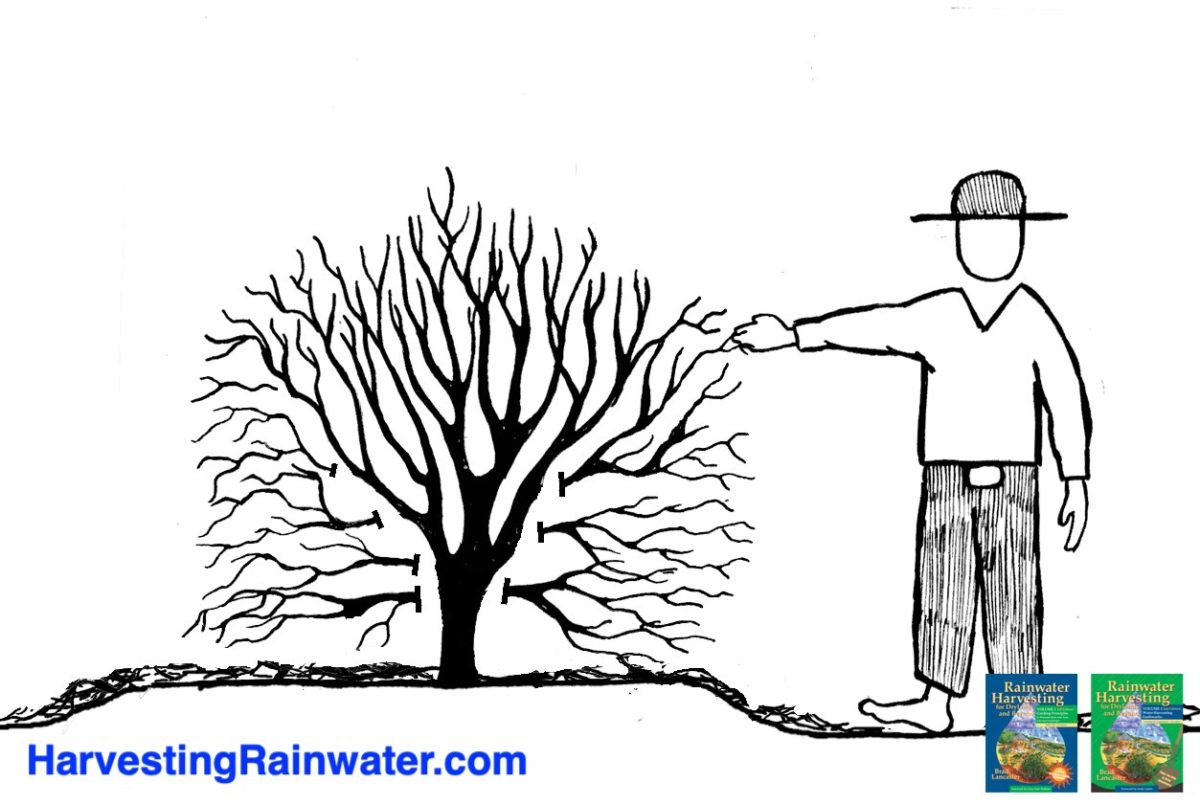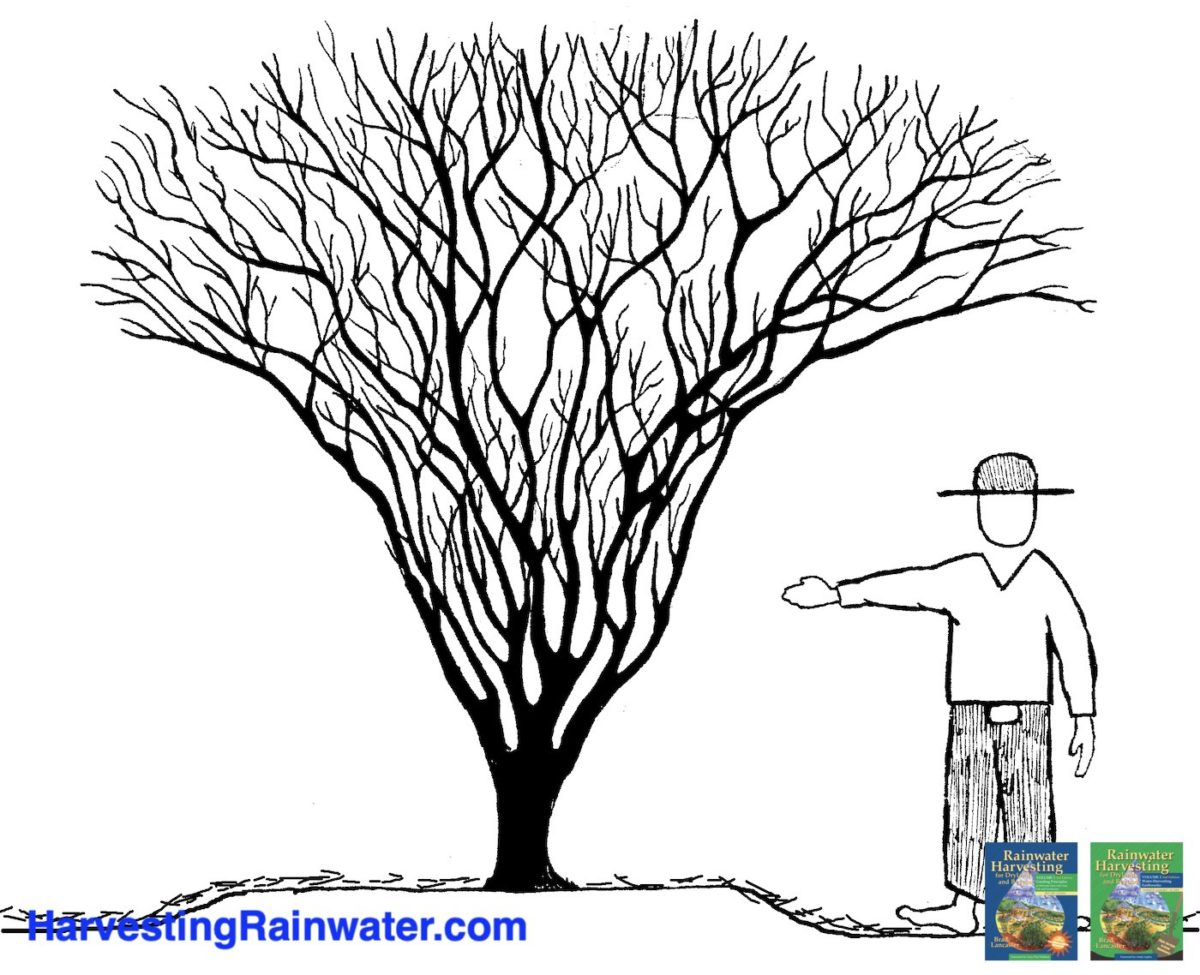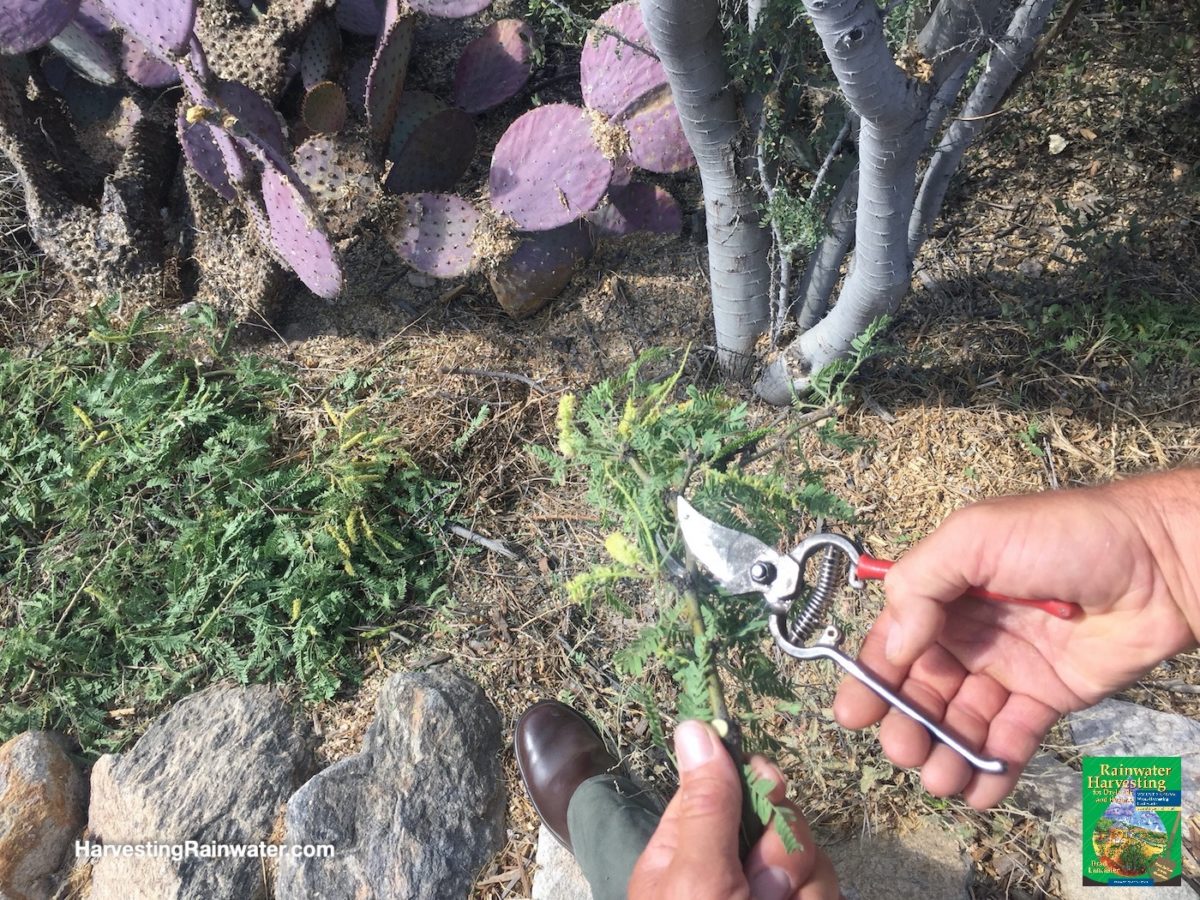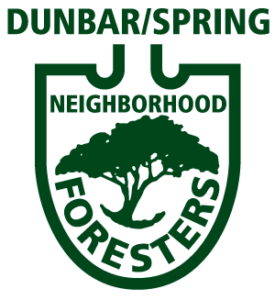Click here to view pruning information in Spanish.
Watch the pruning video Brad Lancaster made many years ago with Desert Harvesters thanks to a grant from the Urban and Community Forestry Financial Assistance Program administered through the State of Arizona Forestry Division – Urban and Community Forestry and the USDA Forest Service…
How to Prune a Native Sonoran-Desert Multi-Trunk Tree
Much of the following is reproduced with permission from Rainwater Harvesting for Drylands and Beyond, Volume 2, 2nd Edition by Brad Lancaster…
Why prune?
Ordinarily plants do not need to be pruned, and are very healthy when they aren’t.
But the need to prune can arise in urban areas with heavy human activity such as along pedestrian paths and streets, within parking lots, or around buildings. In these areas, pruning can maintain pedestrian and vehicle access, open up a space, help transform shrub trees into canopy trees, and regain winter solar access otherwise shaded out by low-growing branches (see drawing of tree pruned for optimal winter sun and summer shade in chapter 4 of Rainwater Harvesting for Drylands and Beyond, Volume 1, 3rd Edition).
When to prune
Pruning should not occur until a plant is well established, three years or more after planting. This is because auxins (hormones made in the tips of branches) travel to the roots to assist in root establishment. The more root growth there is, the more drought-tolerant a plant will be, and the better it will be anchored against strong winds. Pruning removes the sources of auxin, thus root establishment is slowed. The only pruning I recommend early in a tree’s life is to prune off broken branches at their point of origin.
Pruning is best done when the tree is dormant and there is less humidity and thus less fungal activity. For most trees this is in winter. In the Sonoran Desert the month of February is typically ideal (as typical winter rains are winding down), as is September when summer rains are winding down and there has been ample monsoon season growth. Though native trees can be pruned as needed when growth starts to block access to a pathway or such.
How to prune
If you prune plants after their establishment, minimize cuts and nurture the natural growth form of the plant. Many dryland trees and shrubs are naturally multi-trunked, with a draping, well-balanced canopy that provides cover for wildlife, shades the bark of
the plant, and keeps the ground surface cool. Do
not prune such plants into a single trunk or they will become top-heavy, requiring staking and continuous maintenance

Note: Such pruning is necessary only if you are trying to create a shade canopy you can get under.
Never prune more than 25% of the plant.
And never “top” or prune the upward growing branches.
Illustration by Joe Marshall

Note recycling of cut-up prunings on ground as mulch.
Illustration by Joe Marshall
A good pruning cut consists of a direct line from the outside edge of the branch bark ridge (a raised furrow of bark on top of a branch) to the outside edge of the branch collar (a raised furrow of bark on the underside of a branch). The meristematic tissue in these raised furrows will grow over the edges of the cut to seal the cut. Make clean—not jagged—cuts so they heal quickly.
Sharp saws or pruning shears are far better than hatchets for making clean cuts. Scissor-action by-pass hand-pruning shears can be used to cut branches under 3/4 inch (2 cm) in diameter. Avoid using anvil-type pruning shears or loppers that work by directing a cutting blade against a flat surface, crushing plant tissue as it cuts. For larger cuts, use a sharp pruning saw and the three-step saw method shown in figure below to prevent the weight of large branches from splitting or tearing the plant at the cut location.

First, cut from the underside of limb, upwards one quarter to one third of the way through the branch.
Second, cut from the top of the limb downwards, sawing the branch completely off. Third, cut from the top to bottom to remove the stub.
Cut from the outside edge of the branch bark ridge to the outside edge of the branch collar, so the meristematic tissue can grow to seal the cut.
Illustration by Joe Marshall
Do not leave the dreaded “bad-pruning stubs” on plants (see final cut on fig. 11.25). These pose hazards to people and they create entry points for insects and disease. Leave the cut surfaces dry—do not apply tree wound treatments, paints, or pruning compounds. Such compounds may seal in harmful bacteria and interfere with the plant’s ability to naturally seal wounds.
Cut or shred pruned plant materials into 4-inch (10-cm) or shorter pieces, and use these resources onsite by laying them on the ground as a water-conserving mulch around the plants they came from. As the prunings decompose, their nutrients are recycled back into the soil and eventually back into the plant. Large branches can be used for building projects or firewood. Some prunings can also be fed to goats.
Use prunings and fallen seed pods for mulch

Reproduced with permission from “Rainwater Harvesting for Drylands and Beyond, Volume 2, 2nd Edition” by Brad Lancaster
